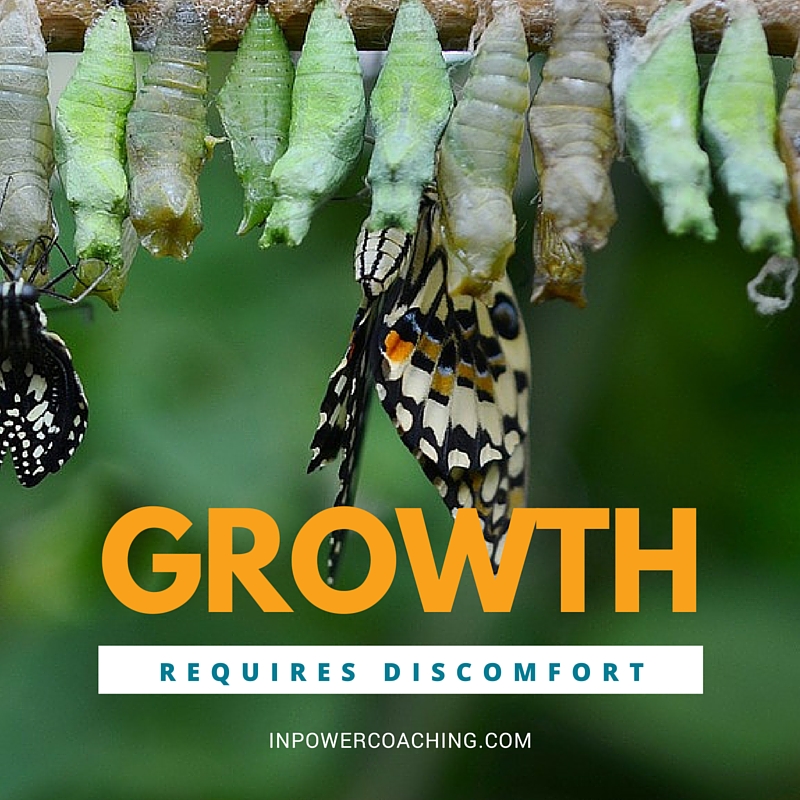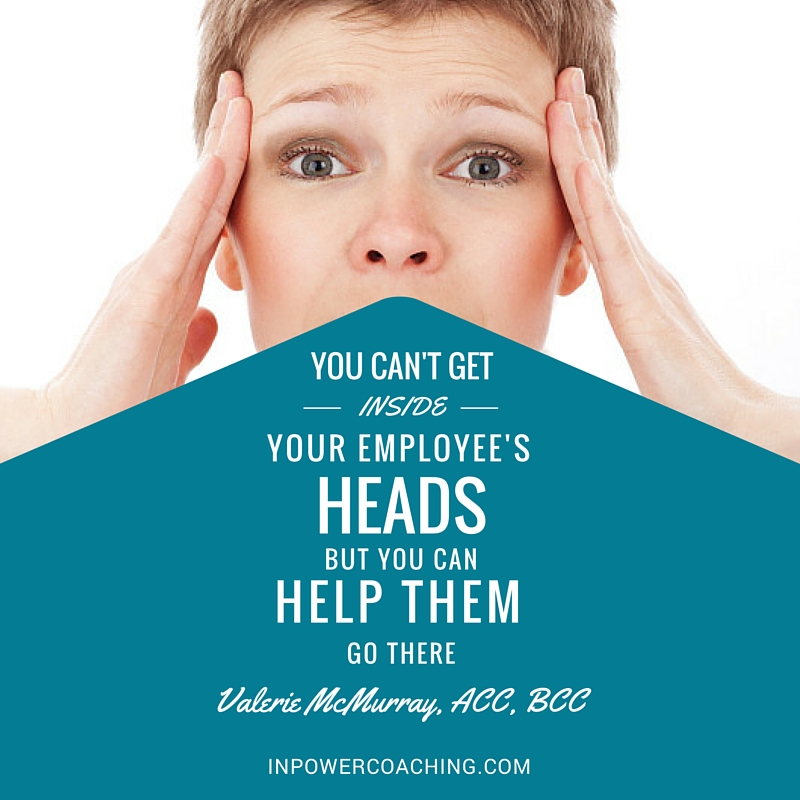by Leslie | Mar 7, 2016 | Gender Equality, InPower Women Blog
Have you ever heard of Women’s Equality Day? It’s August 26th. I’m glad that this day exists. It commemorates the game-changing moment, 95 years ago today, when women gained the constitutional right to vote in the US. It’s important to celebrate that and to remember that there are still many women in the world without a political voice.
But I’m also sad that there’s a Women’s Equality Day, because it confirms that true gender equality still eludes us. Whether it’s a moral issue or a business issue for you, equality matters. And it’s painful to confront the distance we have yet to travel. (more…)
by Dana Theus | Mar 4, 2016 | Coaching Advice, Insights & Inspiration

Woo hoo! I’m headed to the beach for spring break! We’re taking advantage of my son’s spring break from college to take him to Honduras to visit his brother and take the family diving off the coast.
And…. I have so many things left undone in the office. When I stop and think about it I wish I could be in two places at once.
But I can’t.
So I choose not to worry about it. I do what I can, tell everyone how to manage emergencies without me and—blast off!—I’m outta here!
(more…)
by Dana Theus | Mar 2, 2016 | Corporate Culture, Emotional Intelligence at Work, Gender Equality, InPower Women Blog, Women in Leadership
There is a quiet leadership revolution going on, a shift in the definition of success from “what” to “how.” In times of major change, the underdog has a strategic opportunity to end up on top. In this revolution, the women-in-leadership underdogs have a unique opportunity to capitalize on it and use it to define our leadership careers – to play a leadership role in the revolution, so to speak – or miss our chance at squeezing out from under the dominant culture that keeps women and men (both!) from valuing what women bring to leadership table.
The Leadership Revolution
Leadership gurus have long espoused Character as a core asset of any good leader, however bully bosses are so common in high-performing companies that it feels counterintuitive that “good guys and gals finish first.” I mean, even the guys at Harvard Business Review working diligently to show that CEOs that look at the big picture outperform those who don’t, struggled to find a strong correlation between CEOs running “socially responsible” companies and market performance. I suspect that this is because many companies with “social responsibility programs” don’t take that attitude to the level of their corporate culture. I have no proof of that… however…
(more…)
by Dana Theus | Feb 26, 2016 | Coaching Advice, Insights & Inspiration

My husband is going to be traveling a lot in the months ahead, and I’m preparing for some alone time.
Many of my friends are worried about me. They worry I’ll get lonely, and I probably will from time to time, but you know what? I’m really looking forward to some alone time. Alone time let’s me be in silence, and silence is how I hear my mind tell its secrets.
(more…)
by Dana Theus | Feb 19, 2016 | Coaching Advice, Insights & Inspiration

Recently I had to deliver some bad news. Of course my first impulse was to sugar-coat it to try to ease the other’s pain.
Being an experienced coach (and parent) I knew this was a bad idea. In the end, the person would either fool themselves into not understanding what I was saying, make excuses or wish I’d just be straight with them.
But getting my head into the place to tell someone something you know they don’t want to hear always takes me a minute. I took a deep breath and remembered my little secret for holding space for discomfort in others.
(more…)
by Valerie McMurray | Feb 17, 2016 | Emotional Intelligence at Work, EQ & Soft Skills Research
 I remember when the Myers Briggs was the only choice we had for helping people gain insight into themselves and work better when others. Boy have times changed! Now there are over 3,000 personality assessments available, and it can be hard to know where your investment is best placed.
I remember when the Myers Briggs was the only choice we had for helping people gain insight into themselves and work better when others. Boy have times changed! Now there are over 3,000 personality assessments available, and it can be hard to know where your investment is best placed.
In 25 plus years in corporate America HR/ OD, leadership development, training and coaching I used to hire vendors to administer personality assessments to employees. In the late 1990’s I began earning my own assessment certifications with the intention of being more knowledgeable about assessments so I could better judge what vendors were trying to sell to me, and to understand how to develop the best follow-up action plans. This began a long journey that resulted in many assessment tool certifications and building an assessment tool of my own! (more…)
by Andria | Feb 15, 2016 | Career Development, Entrepreneurship
Sometimes as hard as we try to make it work inside the organization we work for, the environment no longer serves us well. And, we are no longer able to serve it well. Despite our best efforts to adapt to and even change the culture and environment, we keep getting the nudge to leave, to start something new, to go out on our own. This is a big and exciting step to take and one that requires courage, the right mindset, planning, and positive expectation. Becoming an aspiring entrepreneur can be one of the scariest and most rewarding things you will ever do!
Here are a few key things to keep in mind as you prepare to leave your corporate job and go out on your own. They can help make the transition smoother and also help ensure your next step is a successful one.
(more…)
by Mary | Feb 1, 2016 | Career Development, Coaching Advice, Personal Mastery
Hey it’s not the “new year” anymore, how are those resolutions coming? Yeah… us too. Enjoy Mary’s more pragmatic take on what brings real change to your life. – InPower Editors
Tired of the whole “new year, new you” resolution practice? Most times, it doesn’t happen. On average it takes you 66 days to achieve your goals by adopting a new habit; for the 25% of us who make a resolution that lasts a week – we barely get a start on that. Many psychologists believe the reason for the failure is “false hope syndrome,” or setting unrealistic goals to change behaviors that are rewards, like smoking, drinking, overeating.
Rather than being unsuccessful at fulfilling random promises, look at the new year as the next set of long-term changes. In the past, I have done 2 activities to get there:
- Practice gratitude
- Shift one personal belief
Practice Gratitude
Everywhere you turn, there is an article about the benefits of gratitude. And there are many benefits, emotionally and physically.
Practicing gratitude encourages us to appreciate what we have rather than what’s missing. Some practice activities include saying thank you more often, journaling our blessings, and sharing those warm feelings with others. Some have misinterpreted gratitude as being selfish because it doesn’t include enough human interaction. However, the practice goes deeper than that.
Practicing gratitude shifts your belief to see that you aren’t entitled to anything.
The 4 noble truths of Buddhism aligns with this perception. Suffering exists because there are desires (expectations). Stop desire and suffering ends.
Without desire or expectation, you realize that life is a series of choices. Everyone makes choices for personal reasons that have little to do with your life. This perspective helps you not take things personally. You also realize that everything you experience is a gift. How you receive that gift gives significance to it.
Another benefit: when you focus on the good in your life, you notice more of what’s great, which leads to abundance.
Shift One Personal Belief
There are many ways to do this, but this is an approach that helped me shift my beliefs and built my skills and confidence.
Step 1. Choose one belief about yourself that you’d like to change.
I have done this in the past for 2 beliefs, one at a time – that I’m horrible at financials and that I’m not athletic. I’d suggest not changing too many beliefs at once – change requires a lot of focus.
Step 2. Shift the story you share about that belief.
As long as you keep telling yourself the same stories, you will continue to believe that they are true.
Most likely, you aren’t good at something because you avoid it. Then, you tell yourself and others that you aren’t good at it. Others believe what you tell them and you assume the identity you shared. It’s a catch 22 situation. (A video from Geneen Roth at Oprah.com for more explanation).
So how do you change the story you tell yourself?
- Be objective with yourself about your accomplishments. No one is a complete failure at anything. You’ve most likely had successes in the area you want to change. Create a list of wins.
- Identify the situations when you didn’t have success. Be objective. This becomes the list of what you need to work on.
- Realize that you may not have been successful because you didn’t have all the information necessary to succeed. Adjust your story to include room for learning.
- Re-write your story including the wins and the learning.
An example:
I was a chubby kid. I wasn’t a great runner and always chosen last for teams. I saw myself as an athletic failure. Occassionally, I’d do something great like kick the kickball over the fence and score a homerun, or stop a basketball from going in the basket. However, I didn’t see these as athletic promise; I saw them as flukes.
This belief continued as I practiced weight lifting in my 20s and performed multi-hour belly dance shows in my 30s. It wasn’t until I started attending a fit camp and kept pace with the athletic class members that I shifted that perspective.
My belief that I’m not athletic held me back from sports or other physical activity. I would drop workout regiments because I thought I didn’t have the ability to do them.
Now my story is that I’m athletic, my legs and abs are strong, and I need to work on my coordination and my arm strength. Talk about a shift!
Step 3. Build confidence by gaining knowledge
Take an interest in the belief you want to change. You don’t need to become an expert overnight, but do small things to build your knowledge about that topic. To shift my financial belief, I would ask my accountant questions, read budgeting books, and take classes about project budgets.
To shift your belief, you need to feel more comfortable with the topic behind the belief you want to change. The knowledge you gain will help you make more informed future decisions.
Step 4. Set goals so you don’t give up
Goals drive change. The best way to keep learning, growing and rewriting your story is to take on a project in the area you want to change. This process allows you to get another win so you can rewrite your story.
(This is why 12-week fitness challenges are successful. They provide experiences for wins to help rewrite your story.)
Here are goals that keep me motivated to change:
- For fitness: Dead hang for 5 minutes. I have a LONG way to get there, but it keeps me motivated to build arm strength and appreciate my accomplishments.
- For financial: Improve cash flow for my business –bill ontime so I get paid ontime. (It sounds simple, but for a sole proprietor with shifting priorities, it’s a challenge.)
Practicing gratitude and changing my beliefs has changed my character. I am happier. I have improved my perception of myself, my self-esteem, confidence, and my capabilities. I also learned about pace. Life isn’t about checklists; it’s a combination of activities that impact change.
So forget the resolutions; work on long-term change to achieve your goals.
Interested in taking these concepts deeper? Check out our free coaching resources!
Guide to Women in Leadership
Organizations with women in their executive suites regularly out-perform others. Yet rising female executives (and their mentors) are frustrated at how hard it is to break through the glass ceiling. In this extensive guide, Executive Coach Dana Theus shares her tried and true strategies to help women excel into higher levels of leadership and achieve their executive potential.
by Dana Theus | Jan 27, 2016 | Coaching Advice, Corporate Culture, Leadership
Emotional Intelligence (EQ) is the new miracle ingredient for corporate culture. Too bad it doesn’t come in pill form! While there is more and more written on the benefits of Emotional Intelligence in the workplace every day, the general lack of it in many work environments can make it hard to spot. Because emotional intelligence are often confused with emotions, Both women and men tend to eschew emotions in the workplace, which is too bad as they can help women get ahead when used intelligently. And how can you improve something you can’t find in the first place?
EQ isn’t a new thing, of course; people with EQ are basically what most of think of as well-adjusted human beings. As the research rolls in showing strong correlations between EQ, performance and employee morale, however, it’s worth learning to look at your organization—and yourself—through its lens.
To help you find emotional intelligence operating in your workplace, I thought it would be useful to describe a few habits of an organization that has integrated some key aspects of emotional intelligence into its corporate culture. There are many more of course, but these three patterns may help you come to appreciate emotional intelligence in new ways, and find even more patterns at work, too!
(more…)
by Leslie | Jan 25, 2016 | Career Development, Coaching Advice

If your New Years resolutions are already in danger, enjoy some tips from Leslie on how to make them real. – InPower Editors
My work as a coach is to help people increase their capacity in an area that really matters to them. For some, it’s the capacity to connect more fully with others. Or to follow through. To inspire others. To take a stand. To stand down. To…
As far as I can tell, there’s no capacity-building without practice: the regular repetition of new moves. Most people would agree on that. So if we know that practice is such a key to growth, why do we often struggle to maintain even the simplest of practices? Why do we wriggle out from under the very effort that will help us fulfill our most ardent intentions?
If we want to grow, our challenge is to become more consistent in practice… and to do so without sicking our “inner terrorist” on ourselves. I’ve found four places to focus when my practices falter: function, form, feeling and ‘futz.’
Focus on function
Let’s face it; practice can be kind of a drag. It’s often not all that interesting; sometimes it’s downright uncomfortable. And it’s often hard to see an immediate pay-off. To make matters worse, many of us relate to practice as an external ‘should,’ an assignment from some cosmic schoolmarm. Few of us relate to practice as what it actually is: the engine of our own fulfillment, created on our behalf toward the accomplishment of our own deep desire.
Let me offer myself up as an example. I tend to resist meditating, despite the overwhelming proof of its all-around-awesomeness. As a practice, meditation is conceptually compelling to me, but less so on a practical level. So I falter. One way to help sustain a practice is to ensure that it serves a function that is real and meaningful to you. If it does, keep reconnecting to its underlying purpose. That will help fan the flames of commitment. But if you’re doing a practice without a clear intent, rethink it. However virtuous a practice may be, it won’t be a ‘good’ one for you if it doesn’t link to something that really matters.
Focus on form
Getting clear on the function of a practice is the basis for discerning its appropriate form. Continuing the meditation example… I don’t aspire to enlightenment. I don’t lust after mind-blowing altered states or blinding insights. My greatest aspiration is that I might bring a friend, a client or a Food Lion check-out clerk some warmth and safe harbor in her day. If sitting on a cushion doesn’t help me do that, maybe it’s not the right form of practice for that goal. Maybe a more potent exercise for me would be something to do ‘out in the world,’ like noticing when I’m impatient and breathing into my heart. Form must follow function.
Focus on feeling
There is something existentially big about carrying out a practice, even if it’s a really small one. The mere doing of it is a powerful turning toward oneself. It is a gesture of remembering and respect that communicates to your own being, “You matter. I will show up for you.” So even if ‘breathing into my heart’ feels rote and superficial today, I am bolstered by the mere fact of having kept my self-promise. It’s often the satisfaction of not abandoning myself that propels me into practice.
Focus on the ‘futz’
If a practice is effective, it’s going to mess with your head. It’s going to futz with the status quo. It might make you sacrifice something you usually put at the top of your priority list. It might cause you to feel incompetent or uncomfortable. Know that. Know that your practice will put your treasured equilibrium at risk. Then you can anticipate that and investigate it, kindly, when it happens. That will give you a real and awakened choice, vs. unconsciously collapsing in the face of discomfort.
What about you?
What practices do you engage in consistently?
- What makes your consistent engagement possible?
- In what ways are those practices well formulated to achieve a clear purpose that you care about?
- What does it feel like to engage in the practice? To what degree do those feelings sustain you in practice?
Is there any practice that you regularly wriggle out of?
- Does it clearly support a strong and true aspiration? Is there a clear and compelling function that that practice supports?
- Is there a way in which the form of the practice could be changed, so that it more directly supports your aspiration?
- Whether or not you enjoy the practice itself, can you connect to a positive feeling you get when you actually do it? Can you leverage that feeling to sustain you in practice?
- What is getting futzed with when you do these practices? What internal value, belief or habit does the practice threaten?
Originally on: LinkedIn
Take charge of your career development to get the job that supports your work and your life. Check out the tools and resources in the InPower Coaching Career Center.





 I remember when the Myers Briggs was the only choice we had for helping people gain insight into themselves and work better when others. Boy have times changed! Now there are over 3,000 personality assessments available, and it can be hard to know where your investment is best placed.
I remember when the Myers Briggs was the only choice we had for helping people gain insight into themselves and work better when others. Boy have times changed! Now there are over 3,000 personality assessments available, and it can be hard to know where your investment is best placed.






